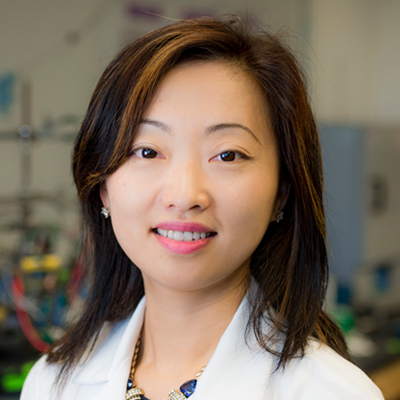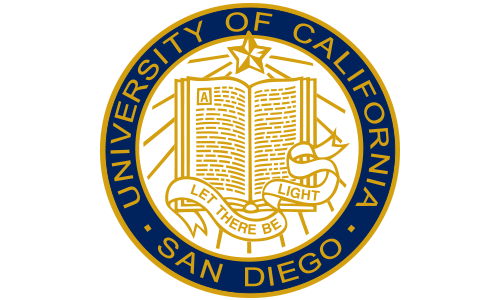Finding innovative ways to store and convert renewable energy
Energy technology is advancing on all fronts: electric cars that truly have zero CO2 emissions, smart grid technology engaging residential customers, renewable energy growing worldwide, and large investments in energy efficiency. This is a manifestation of a new societal trend towards energy independence and environmental sustainability. Professor Shirley Meng’s research group, Laboratory for Energy Storage and Conversion (i.e. LESC) at the University of California, San Diego Nanoengineering department, has been focusing its efforts on the basic science and applied research for the design and development of new functional nanomaterials and nanostructures for advanced energy storage and conversion applications. Conversion of raw materials into usable energy and storage of the energy produced are common aspects of everyday life. The development of new materials to improve upon current capabilities is a key technological challenge of the 21st century. Advances will create smaller more powerful batteries and will provide a greater ability to harness more sustainable energy sources.
Professor Meng at UCSD pioneers in combining first principles computation with many highly skilled experiments to design and optimize better materials for energy applications. Fully taking advantage of the scientific advancements that have accelerated over the past forty years, LESC relies on the power of supercomputers to predict and simulate material properties and runs fewer and more successful experiments as opposed to the traditional Edisonian way of trial and error. Also extremely helpful are novel instruments that can “see” things at less than one nanometer spatial resolution. These instrumentations based on synchrotron x-rays and electron sources can probe materials at their atomistic level, and using these techniques the team can observe how the atoms are arranged and changed differently, sometimes during the operation of the batteries. This is important because many of the macroscopic properties like voltages or charge rate of batteries are dominated by the materials phenomena occurring at the nanoscale or the armstrong scale. Understanding how electrons, ions, and photons interact in materials provides insight into formulating strategies for improving and designing materials for better applications. As a laboratory in a public university and a renowned academic research institution, LESC is also committed to training and mentoring graduate students, postdoctoral researchers, undergraduate students, and high school students to equip them with the necessary knowledge, expertise, and skills to excel in today’s highly competitive technology-driven society. It is one of their key goals to raise up the next generation of scientists who will advance the breakthroughs, as well as educate the general public about green energy technologies and the beautiful fundamental science that make these technologies a reality.
Research areas at Laboratory of Energy Storage and Conversion include:
- Batteries for Transportation: We are living in exciting times where people are becoming increasingly familiar with the benefits of electric vehicles like Tesla or Chevy Volt. These electric vehicles operate on lithium ion batteries, which comprise an emerging field of technology that is innovative in approach but needs improvement. Although lithium ion batteries are critical in facilitating efficient and eco friendly transportation, the major complaint in these batteries is that a single charge allows only limited driving range. Therefore, researchers at LESC are seeking ways to prolong the battery life and improve the performance so that electric cars can be more cost effective. Another issue that the team is working towards is reducing the cost of production. Because electric vehicles are relatively expensive today, researchers hope to develop materials and processes that will result in the same, if not better, performance as that in a Tesla, but at half its price, making the product affordable and available to the general public. The third challenge that the team is tackling concerns the engineering designs for safe operation of lithium ion batteries. Currently, the team has collaborating efforts to create fail-safe batteries that ensure protection even in the event of crash and to prevent battery explosion that could unnecessarily harm drivers and passengers.
- Energy Storage for Renewable Energy Sources in Smart Grid: Many U.S. households have solar panels on their rooftops and cannot be grid-free as they have to connect to a utility company’s grid. Researchers at LESC are looking at enabling distributed energy generation and storage, so that households with these solar panels can also have batteries in their basement that will power their house at night with the energy collected during the day. In the future, Professor Meng and her team hope, this smart grid technology will enable a grid-free solution where connecting to a utility company will not be necessary, minimizing carbon dioxide emission and engaging residential customers in making the right choices. Considering that the cost of battery storage has to be affordable to users, the team has developed new chemistries and battery architectures for this kind of grid storage to adequately substitute for the lithium ion battery which otherwise is relatively more expensive.
- Novel Nanomaterials for More Efficient Energy Storage and Conversion, i.e., the Third Generation Solar Cell Research: If the first generation solar cells involved silicon-based technology and the second generation solar technology was based on other expensive compounds, the third generation solar cells can potentially be made via a very simple and flexible route that does not require heavy support structures and that more efficiently collect solar light. A new, groundbreaking generation of solar cells, the perovskite-sensitized solar cells (PSSCs) have high power-conversion efficiency whose lifespan and stability can be further improved. Focusing on the function of the electrolyte components in PSSC, the team aims to understand their charge transfer and recombination mechanisms in the PSSC, as well as the degradation processes to improve the durability of this type of third generation solar cells.
Bio
Director of the Laboratory for Energy Storage and Conversion (LESC), Dr. Shirley Meng received her Ph.D. in Advance Materials for Micro & Nano Systems from the Singapore-MIT Alliance in 2005, after which she worked as a postdoc research fellow and became a research scientist at MIT before joining University of Florida, Department of Materials Science & Engineering as a junior faculty member in 2008. Dr. Meng is currently the Associate Professor of NanoEngineering and Materials Science at the University of California, San Diego (UCSD).
Shirley has always been interested in climate change and environmental issues. Growing up in China, when she was just twelve, she wrote a Chinese essay that was published in the newspaper, satirizing the pollution in the ocean based on a famous children’s tale character - the “Magic Monkey”. Residing in the beautiful city of San Diego, Prof. Meng and fellow researchers at LESC are deeply invested in creating and preserving a clean environment by improving technology to make the world a better place.
Professor Meng also enjoys photography and notes that taking microscopy photos - or atomic level images - is its own form of art. She truly believes that, “there is science in art and art in science,” and hopes to utilize her expertise and insights to bring further innovations.
For more information, visit the laboratory website at: http://smeng.ucsd.edu/research/


